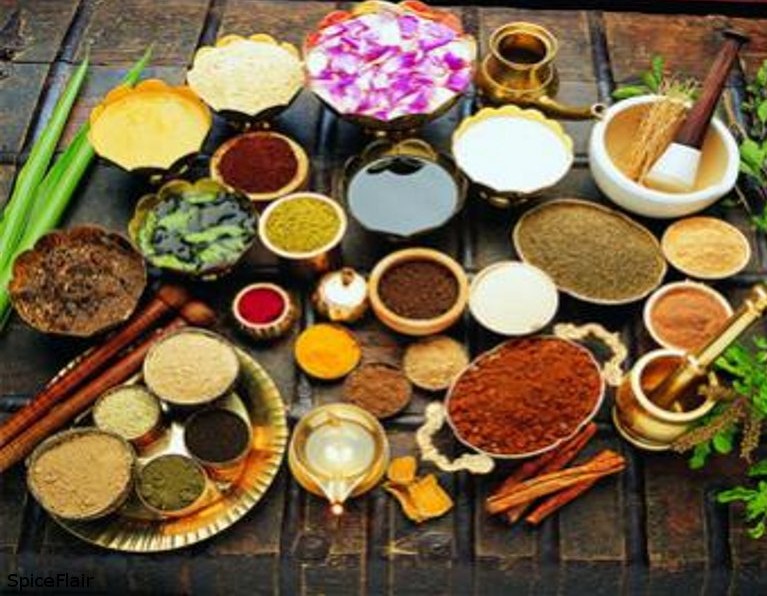
Ayurveda, the ancient science of healing plays a crucial role in the upkeep of our health and overall wellness in many ways.
Ayurveda is a sister science to yoga. Both were founded in India centuries ago by the devoted saints and yogis. And fortunately both have survived till this date in the modern world. There are many things that are common between the two sciences and much like yoga; Ayurveda has intricate ways of working and idealistic reasoning behind their processes.
There are 4 main scriptures or Vedas that are primary Indian scriptures namely Rig Veda, Sam Veda, Yajur Veda and Atharva Veda. Yoga was a practice that became a part of the ancient Indian scripture called the Rig Veda. And Ayurveda became a part of the ancient Indian scripture called the Atharva Veda.
Ayurveda is a combination of 2 Sanskrit words; Ayur, meaning life and Veda meaning sciences. Ayurveda fairly translates to the science of life. It is the kind of science that aims on attaining positivity and the perfection of the balance of a body so that it can function in an optimal way. It generally deals with the inner processes of the body and the corrections of faulty processes inside the body with outward help and practices.
To experience some of the best Ayurvedic beauty courses in India, one must visit and take Ayurveda courses in Kerala, the south of India.

Ayurveda focuses on these factors:
- The constitutional aspects of a body also known as Prakriti.
- The driving forces of life itself known as the Doshas.
- The connectedness of a being with the forces of the universe.
Similar to yoga, Ayurveda is a way to align the body and the mind with the spirit. Just in Ayurveda this is achieved by correcting the faulty doshas in one’s body. According to Ayurveda there are essentially 3 kinds of Body Types. Our bodies are constituted of the 5 main elements working together to create our spirit. These elements are present in the body of every person but in different ratios. Some elements may be in majority than the other elements in a body.
Before this gets any more confusing, the elements are: – the water (jal), fire (agni), wind (vayu), ether (akash) and the earth (prithvi) elements that are readily found in nature. The elements are collectively also called the Panchmahabhutas. The presence of these elements inside us gives us the much needed evidence that we and our bodies are connected to nature itself and hence can be healed by nature single-handedly and hence Ayurveda was born.
So how does the doshas work in one’s body?
According to ayurveda the elements are what compose the basic characteristic spirit of oneself. And there are 3 main types of Doshas or body types. They are:-
- The Vata Dosha (this is mostly Wind energy):
This is the dosha that is associated and is composed of majorly the wind and ether elements in one’s body. This is the kind of energy that is responsible for characteristics such as flexibility and creativity in a person.
In essence this dosha is responsible for functions of the body such as motion, such as blood circulation, blinking, movement of the tissues, breathing, heartbeats, movement of the cells and essentially the connection of the nervous system and the mind.
Generally cold and dry in their essence, a person with the correct vata balance is usually energetic, lean and enthusiastic about their structure and the way they lead their lives.
It is suggestible for people with a vata dosha to eat the kind of foods that are warm in nature to keep their bodies warm.
- The Pitta dosha (this is usually the fire energy)
This is the dosha that is associated and is composed of majorly the fire and water elements in one’s body. This is the kind of energy that is responsible for characteristics such as intelligence and contentment in a person.
In essence this dosha is responsible for metabolic functions of the body such as absorption, digestion, nutrition and the temperature of one’s body.
Generally hot and sharp, oily and subtle in their essence, a person with the correct vata balance is usually spreading, immobile, unstable, intelligent, content, outspoken and sharp about their structure and the way they lead their lives.
It is suggestible for people with a pitta dosha to eat the kind of foods that are cooler in nature to keep their bodies cool and also have sufficient amounts of rest.
- The Kapha Dosha (this is usually the earth energy)
This is the Dosha that is associated and is composed of majorly the Earth and water elements in one’s body. This is the kind of energy that is responsible for characteristics such as cohesiveness solidity and structure in a person.
In essence this Dosha is responsible for growth functions in the body and providing water to all the parts of the body. It is also responsible for lubricating the joints, strengthening immunity, protecting tissues, moisturizing the skin and hydrating all the cells and the other systems in the body.
Generally loving and forgiving in their essence, a person with the correct Kapha balance is usually calm, stable, patient, thoughtful, filled with stamina and a strong built about their structure and the way they lead their lives.
It is suggestible for people with a Kapha Dosha to eat the kind of foods that are colorful and warm in nature to keep their bodies stable and also avoid stagnation along with exercising and de-cluttering regularly.
